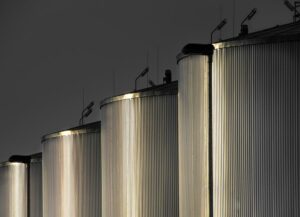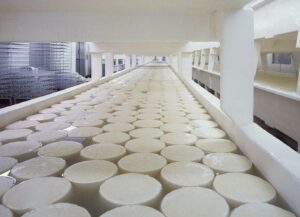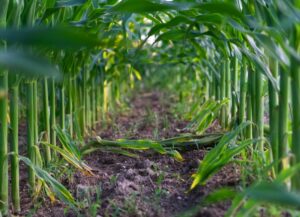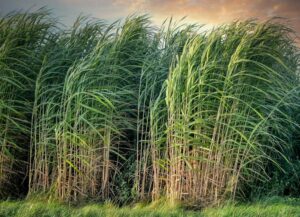María Villagrasa & Nuria García
Whey permeate is a nutritious co-product of cheese making. With the growth of this industry there is greater availability, which needs to be disposed-off adequately, since is it is a strong water contaminant.
A better understanding of the nutritional characteristics of the permeate has allowed the search for new ways to reuse it, including as a feed for ruminants. From this perspective, it can be used as a liquid mixed with water, concentrated or as dried solids.
Whey permeate is obtained by extracting proteins and other solids from milk or whey. Its lactose content is very high, ranging from 80 (acid) to 87% (sweet), so it can essentially be considered an energy-supplying feedstuff (approximately 3.4 Mcal metabolizable energy/kg dry matter; DM). It also contains approximately 3% protein and 10% ash (DM).
Some studies indicate that feeding sugars such as lactose or sucrose as partial replacement for the starch in cereal grains, improves milk production; other studies however have shown negative results. Ruminal protein after feeding whey permeate has also shown inconsistent results.
It is possible that the type of sugar and the amount added may be the cause of these inconsistencies. It is therefore important to determine the production responses and N utilization when cows are fed diets based on different types of grain (most studies are based on maize) and with different amounts of sugar.
A group of researchers from the University of Saskatchewan (Canada; De Seram et al., 2020) studied the effects of the partial replacement of barley starch with lactose (in the form of whey permeate) on ruminal fermentation and productive performance in dairy cows.
Eight Holstein lactating multiparous cows were assigned to four groups fed barley silage diets and containing the following amounts of total sugars (DM basis): 3.64% (control), 6.60%, 9.60% and 12.6%. To achieve the desired sugar content, dry rolled barley grain was replaced with whey permeate (83% lactose). The diets were fed as total mixed rations and the forage to concentrate ratio was 50:50, DM basis.
Ingredients and nutritional composition of diets are in Tables 1 and 2.
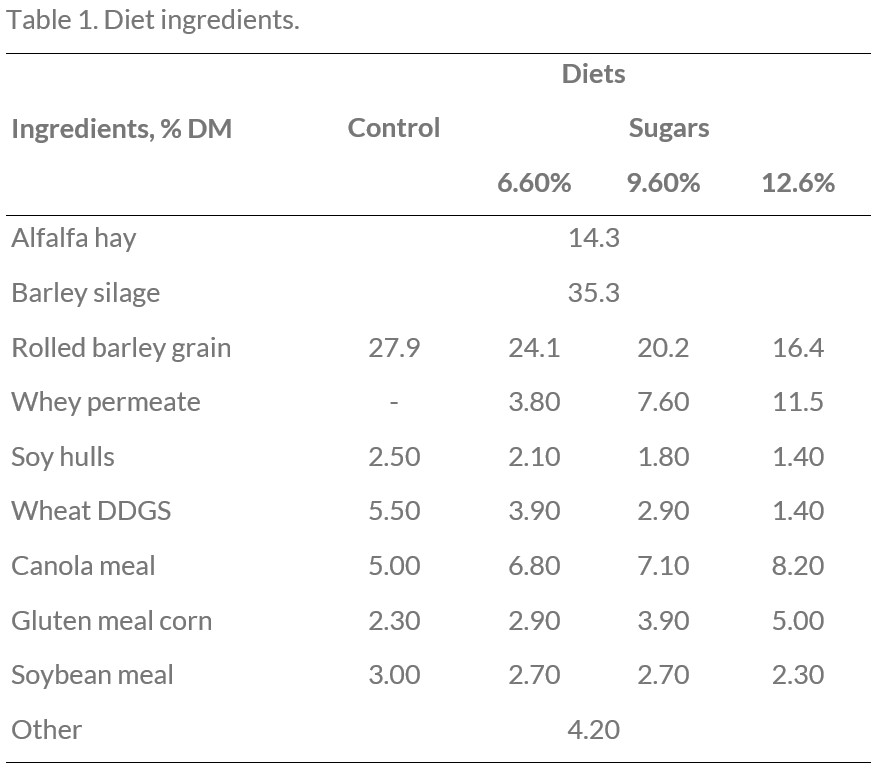
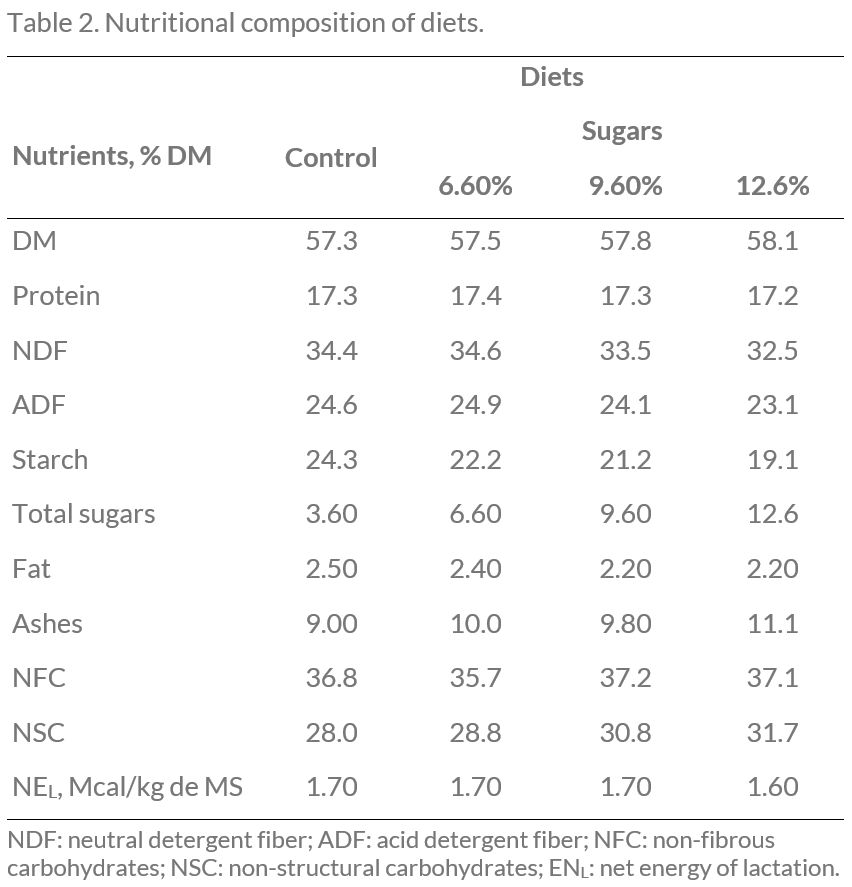
The partial replacement of barley with lactose reduced the starch content of the diet from 24.3 (lactose-free control diet) to 19.1% (diet with the highest amount of lactose). The total content of NSC and NFC for all diets ranged from 28.0 to 31.7% and from 36.8 to 37.1%, respectively. Neutral detergent fiber was reduced from 34.4% in the control diet to 32.5 in the diet with the most lactose, while ADF went from 24.6% to 23.1%.
Lactose inclusion did not change most productive parameters
Dry matter intake (26.7 kg/day), milk production (34.8 kg/day) or energy-corrected milk (36.0 kg/day) were not affected by including lactose in the diets. Similarly, the content and production of milk fat and protein were also no different between diets.
The lack of an improvement in milk production by adding lactose was probably because the cows did not consume more DM. These results are consistent with those of other authors. However, some studies have also shown increased DM intake. This disagreement may be related to factors such as differences in the basal composition of the diet and amount of feed ingested, so that production responses may depend on the type of cereal grain that is replaced by sugars.
Moreover, the lactose content of milk increased by adding more sugars (from 4.40% lactose in the control to 4.46% in the diet with an average lactose content; in the diet with the greatest lactose the percentage fell back to 4.40%); however, lactose yield was not affected. Likewise, the inclusion of lactose did not affect the concentrations of milk urea nitrogen, plasma urea nitrogen or beta-hydroxybutyrate.
Characteristics of ruminal fermentation
Ruminal concentrations of acetate, propionate, iso-butyrate, volatile fatty acids and acetate to propionate ratio were not affected by the inclusion of lactose. Ruminal butyrate concentrations however increased linearly by increasing the lactose concentration. The latter is consistent with previous studies, indicating that there may be a partial shift in ruminal fermentation of lactose towards the production of butyrate in cows fed diets containing lactose as a source of sugar.
With regards to the ruminal ammonia concentrations, they decreased linearly with the lactose content, which could suggest a better use of ruminal nitrogen. However, other factors related to better N utilization, such as bacterial non-ammonia nitrogen flow, increased as lactose content in the diet increased to 9.60%, before decreasing by 12.6%. This suggests that including sugars above 9.60% of the DM may reduce the synthesis of ruminal microbial protein.
Ruminal pH showed a quadratic response; it increased with lactose concentration, and then dropped when lactose concentration was at its maximum (control: 6.32; lower lactose concentration 6.31; medium lactose concentration 6.34, high lactose concentration 6.22).
Conclusions
The results of this study indicate that milk production did not improve when lactose replaced barley starch. On the other hand, although nitrogen use in the rumen could improve by adding increasing amounts of lactose beyond 9.60%, it could also have negative effects on some factors related to N use.
Reference
De Seram, Eranga & Penner, Gregory & Mutswangwa, Timothy. (2019). Nitrogen utilization, whole-body urea-nitrogen kinetics, omasal nutrient flow, and production performance in dairy cows fed lactose as a partial replacement for barley starch. Journal of Dairy Science. 102. 10.3168/jds.2018-15956.
© 2021 Dairy Knowledge Center. All Rights Reserved.



